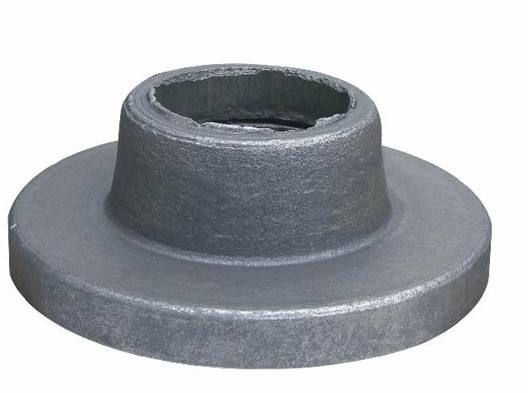Hello, welcome to visitAnhui Miteji Machinery Co., Ltd.!
Qr code

Mobile phone preview
Hello, welcome to visitAnhui Miteji Machinery Co., Ltd.!
Qr code

Mobile phone preview
Chromium plays a decisive role in the corrosion resistance of stainless steel forgings, in the definition of stainless steel, w(Cr)>10.5%, it is the main element of stainless steel corrosion resistance, the higher the content of chromium in steel, the better the corrosion resistance. This is because the steel can form a stable surface protection film (about lO m) with Cr203 as the matrix in the oxidizing medium, that is, passivation occurs, and chromium is enriched in this film. At the same time, chromium effectively increases the electrode potential of the solid solution (ferrite, martensite, or austenite), so that the electrode potential of the original pure iron (low carbon steel) changes from negative to positive, thus protecting the steel from corrosion. When chromium was added to stainless steel, the electrode potential mutated according to the rule of n/8. For every 1/8, 2/8, 3/8,... , n/8, i.e. 12.5%, 25%, 37.5%... The atomic concentration of chromium accounts for 1/8 (12.5%, mole fraction), if the mass is 11.7% (mass fraction), so the chromium content of chromium stainless steel is generally above 12% (mass fraction). When the chromium atom content reaches 25% (mole fraction), a second mutation occurs and the corrosion resistance of chromium steel is further improved.

In addition, chromium has a good effect on the mechanical and technological properties of stainless steel. Chromium can improve the hardenability of steel and has been widely used in low alloy structures. This effect of chromium reduces the transformation rate of austenite to ferrite and carbide, making the austenite isotherm shift significantly to the right, thus reducing the critical cooling rate of steel quenching, resulting in the increase of steel hardenability, some martensite stainless steel air quenching can obtain martensite structure.
Chromium can improve the oxidation resistance of steel. With the increase of chromium content, the oxidation resistance of steel is improved obviously. In martensitic chromium stainless steel, the antioxidant property of steel is 4 ~9 times higher than ordinary steel, and the temperature of martensitic chromium stainless steel without peeling is about 700-850 ° c.
Chromium is currently the only industrially useful element that passivates steel and gives good corrosion resistance. With the increase of chromium content, atmospheric corrosion resistance is improved. In oxidizing media (such as dilute nitric acid), the corrosion resistance of stainless steel increases with the increase of chromium content; However, the corrosion resistance of stainless steel decreases with the increase of chromium content in reductive media.
The effect of chromium on the physical properties of steel is as follows: chromium can increase the lattice constant of steel, increase the specific volume linearly with the increase of chromium content, and significantly reduce the thermal conductivity of fe-cr alloy, and increase the resistance of steel. The resistance of martensitic chromium stainless steel is 4 ~6 times that of ordinary steel. Under quenching conditions, the increase of chromium increases the amount of stable ferrite, thus reducing the hardness and tensile strength of steel. Under annealing conditions, the strength and hardness of low carbon fe - cr alloys increased with the increase of cr content, while the elongation decreased slightly.
The maximum solubility of chromium in pure product-fe is about 12.0%. At w(C)≈0.5%, the maximum solubility in the austenite is approximately 20%. The solubility in pure a-fe is infinite. The solubility of N can be increased in cr-mn-n steel.
Chromium tends to form more carbides in steel forgings than manganese and less than tungsten.
Chromium improves the high temperature strength of steel and the wear resistance of high carbon steel.